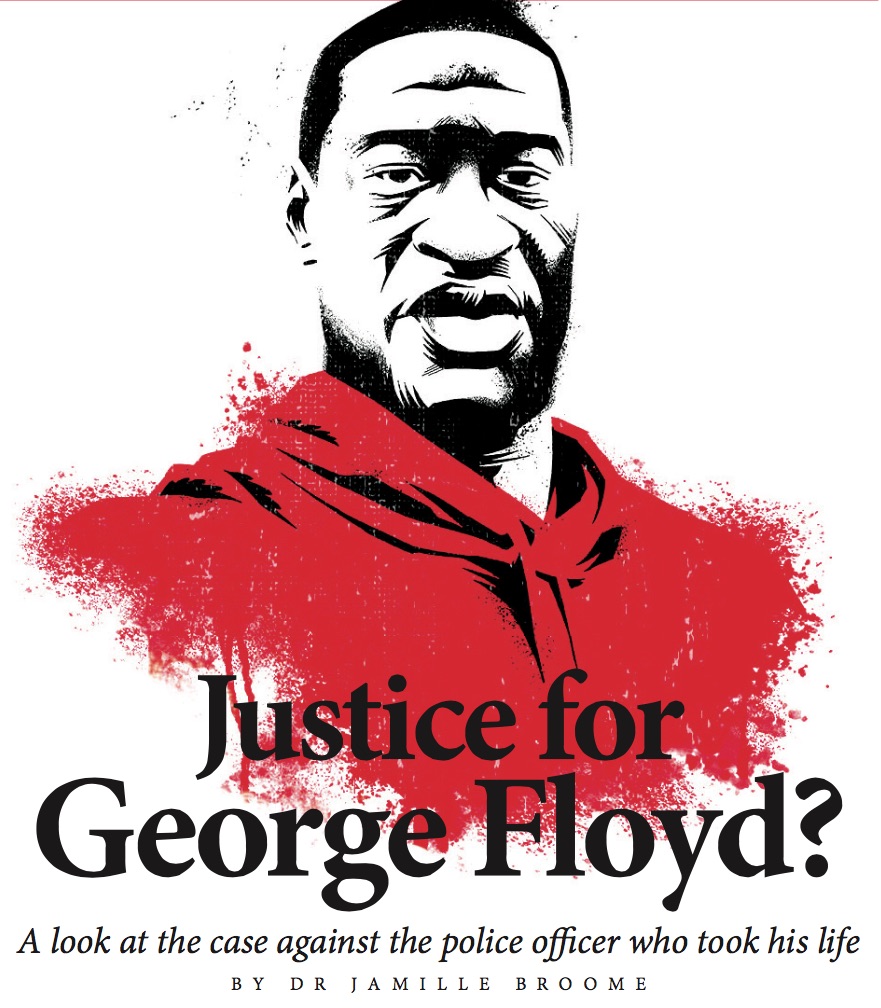
Although Black Lives Matter protests have dwindled, the spotlight on dismantling systemic racism still shines brightly, thanks to the collective demands of the international community.
Naturally though, some have chosen to ignore the positivity in favour of highlighting the lawlessness that marred several protests, but the simple response is this: property can be replaced; people cannot. Furthermore, there are those who believe that ‘Black Lives Matter’ is racist ideology; however, it is entirely farcical to believe that all lives matter when mass murderers like Dylann Roof are peacefully arrested after a racially motivated massacre, whilst unarmed black men, from Amadou Diallo to George Floyd, are instead murdered by the police. It is painfully obvious that although all other lives matter to the police, black lives do not.
George Floyd was a 46-year-old African-American man who died on May 25, 2020 in Minneapolis, Minnesota, USA after police officer Derek Chauvin knelt on his neck while he was already handcuffed and lying face down on the street. As a result of the incident, Chauvin has since been fired and charged with murder in the second degree and manslaughter in the second degree.
Minnesota Statute 609.205 – there are five categories of 2nd degree manslaughter, all of which carry a maximum prison sentence of 10 years or a $20,000 fine; however, this post will only focus on the offence applicable to the killing of George Floyd:
As highlighted above, to prove this charge, the prosecution must establish:
(upgraded from 3rd degree murder)
Minnesota Statute 609.19 - there are two types of 2nd degree murder, both of which carry a maximum prison sentence of 40 years:
**If the felony offence of “manslaughter” is established, there should be no difficulty in proving this charge.
Minnesota Statute 609.195 – there are two categories of 3rd degree murder, both of which carry a maximum prison sentence of 25 years; however, this post will only focus on the offence applicable to the killing of George Floyd:
The issue with the 3rd degree murder charge is proving that the defendant was, at the time of the incident, “evincing a depraved mind”.
What exactly does this term mean?
Well, in the Supreme Court of Minnesota case of State v Mytych (1972), it was defined as “a mind which has become inflamed by emotions, disappointments, and hurt to such degree that it ceases to care for human life and safety is a depraved mind.”
From what is known about the case, it seems impossible to prove this aspect of the charge for Chauvin, although there have been comparisons to the 2019 conviction of former Minneapolis police officer Mohamed Noor for 3rd degree murder and 2nd degree manslaughter in the 2017 shooting death of Australian-born Justine Ruszczyk a month before her wedding. Be that as it may, both cases are significantly different.
Based on the clarity of the law, it may seem obvious that a conviction for Chauvin on both charges should be the only outcome, but please remember that the police officer who murdered Eric Garner in 2014 is still a free man.
